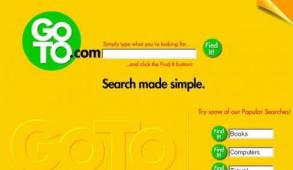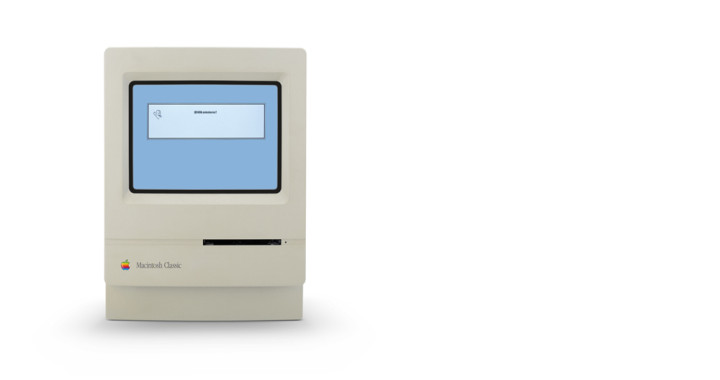With the development of email, the HyperCard & Aspen Movie Map, all of which predate the World Wide Web, a new marketing channel was birthed — digital advertising.
We’ve come a long way since the days of one advertising medium being the only vehicle. In 1440 when Gutenberg invented the modern printing press, there weren’t many choices. These days, the opposite is true. The amount of advertising choices is staggering. Even within online advertising, there are an innumerable number of media outlets, blogs, social networks, advertising networks, agencies & technologies. So let’s travel back to a simpler time & revisit an abbreviated history of digital advertising.
Email Marketing
The first mass email marketing campaign is credited to Gary Thuerk, a marketing manager at the Digital Equipment Corporation. While DEC was was popular on the East Coast of the US, Thuerk’s now infamous email was an attempt to expand into the West Coast & doubled as an invitation to a West Coast product demonstration. He clicked the send button on that email in 1978, and for it’s time, there were so many unsolicited recipients that a Federal agency intervened & SPAM was born. But in retrospect, the ploy worked, with Theurk reporting DEC sold around $14 million worth of the machines as a result of the email.
Display Advertising
The first display ads are credited to Prodigy, a joint venture between Sears & IBM. But in 1994, law firm Heller Erhman White & McAuliff was the first business to run a clickable display ad. They purchased the ad space through Global Network Navigator, the first web publishing company, owned by O’Reilly Media. Within one year GNN had clients like Mastercard & Zima, and was selling ad space at a rate of $110 to $11,000 per week. GNN was purchased by AOL for $11 million.
DoubleClick & HotWired
DoubleClick, now owned by Google, and HotWired are known as the first to bring scale & real analytics to online display advertising. HotWired — the first commercial online magazine — & DoubleClick took GNN’s business model, doused it with gasoline & struck a match. Creating online marketing history, HotWired ran AT&T’s first display ad, pictured below:

The ad space sold for $10,000 per month, ran for 3 months & boasted an unprecedented click-through rate of 44%. When users clicked the ad they were given a digital tour of the world’s great museums. This campaign launched countless companies & digital ad deals involving the likes of CompuServe, AOL, NetScape, MCI, Vibe Magazine, Time Inc., Saturn, Airwalk Footwear & Yahoo to name a few.
DoubleClick, who is now owned by Google, provided ad data services to online marketers as early as 1996. The agency developed technology to track banner ads & consumer’s every move online, using cookies, by collecting their anonymous online profiles. Using the data, marketers were able to deliver targeted internet ads in real time, something unheard of before the the late 90s. DoubleClick was undoubtedly successful — it was one of a few firms to survive the Dotcom bubble & was acquired by Google for $3.1 billion 2007.
Dotcom Bubble & Bust
Just before the infamous Dotcom bust, a whirlwind of activity, known as the Dotcom bubble, changed the online advertising industry forever including:
- Microsoft sponsoring the 1996 Super Bowl website for an unheard of $200,000.
- The New York Times website launch, featuring ads from Chemical Bank & Toyota. The Wall Street Journal’s website quickly followed.
The Dotcom bubble was a result of thousands of new startups springing up between 1997 & 2000. Many of these businesses raised jaw-dropping of amounts of cash & by adding an ‘e’ or ‘.com’ to their business name, were almost guaranteed investment. If that’s not scary enough, reputable media outlets like Forbes & Wall Street Journal encouraged the public to invest in these companies, many of them poorly organized, fraudulently run & bleeding cash. To put this into perspective, the 2000 Super Bowl advertising spots featured 16 dot-com companies, each spending $2 million for 30 seconds of air time. A list of the companies who contributed, and fell victim to, the bubble can be found here.
Pop-up Ads, Pay Per Click Advertising & Search
After the Dotcom bubble, banner advertising proved less profitable. Click-through rates & ad prices dropped dramatically. So with the invention of Javascript, a programming language that allowed the ‘window open’ command, and falling banner ad revenue, the hard-to-kill pop-up ad was born. But show me someone who enjoyed pop-up ads and I’ll show you how to walk on water.
That’s right, pop-up ads sucked & were short lived. But that frustration paved the way for pay per click & search advertising. As Google was just figuring out how to improve search, GoTo.com & it’s founder Bill Gross invented the first paid, online search company which would become the predecessor to Google Adwords: paid search that was relevant, accurate & not overrun with spam. Here’s a screenshot of GoTo.com:

Social Media & Advertising
Social media has exploded in recent years. It’s safe to assert the internet would not be the advertising powerhouse it is today without it. Social media advertising is projected to generate $11 billion in revenue by 2017. Facebook, leading the pack, unveiled one of it’s first major advertising efforts by partnering with J.P. Morgan Chase to promote Chase’s new credit card. Following that partnership, Microsoft signed on, becoming the sole provider of banner ads & sponsored links on Facebook’s ad platform. But Facebook wasn’t always an advertising high flyer. Check out their first ad effort, a far cry from where they are now.
Twitter & YouTube were quick to join the fun. Twitter unveiled Promoted Tweets & Trending Topics, signing on partnerships with Kim Kardashian & Charlie Sheen. And one year after it’s inception, YouTube launched Brand Channels with Warner Bros. records becoming their first customer.
As marketers, thankfully we’ve advanced beyond Gutenberg year 1440 printing press. But on the contrary, the internet is a vast & changing sea, hard to navigate alone. So at Excitaprint, our goal is to simplify the mayhem for our customers. Not only online, but offline too. There are so many variables: design, to copy-writing, the audience, the timing & the media to list a few. But hopefully this article helped make some sense of it all. Give us a call or email. Let’s talk about your company’s goals and how we can help.
